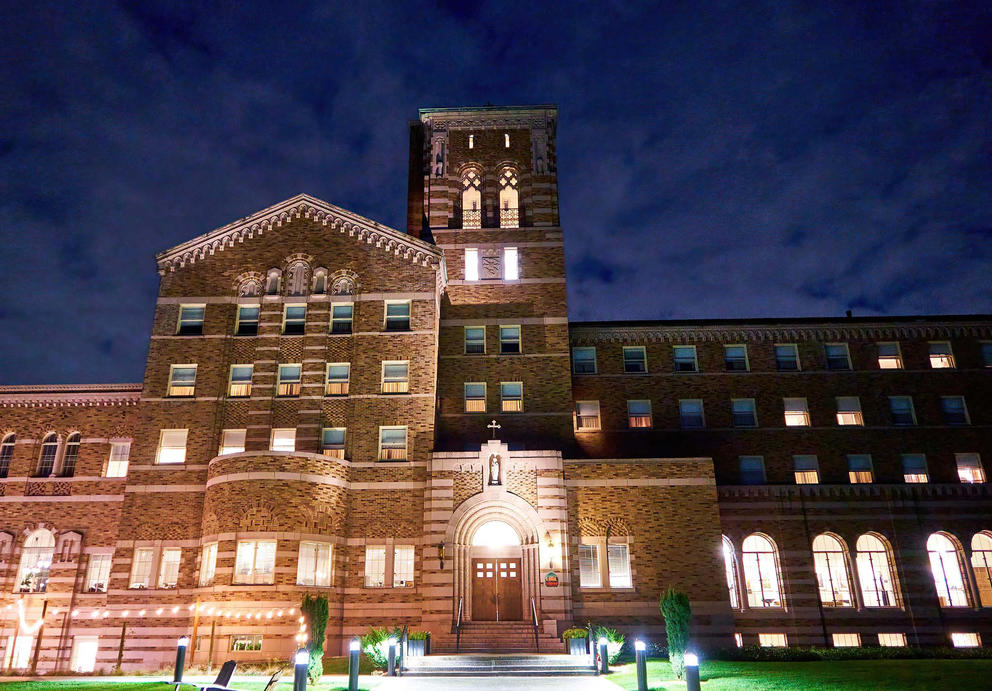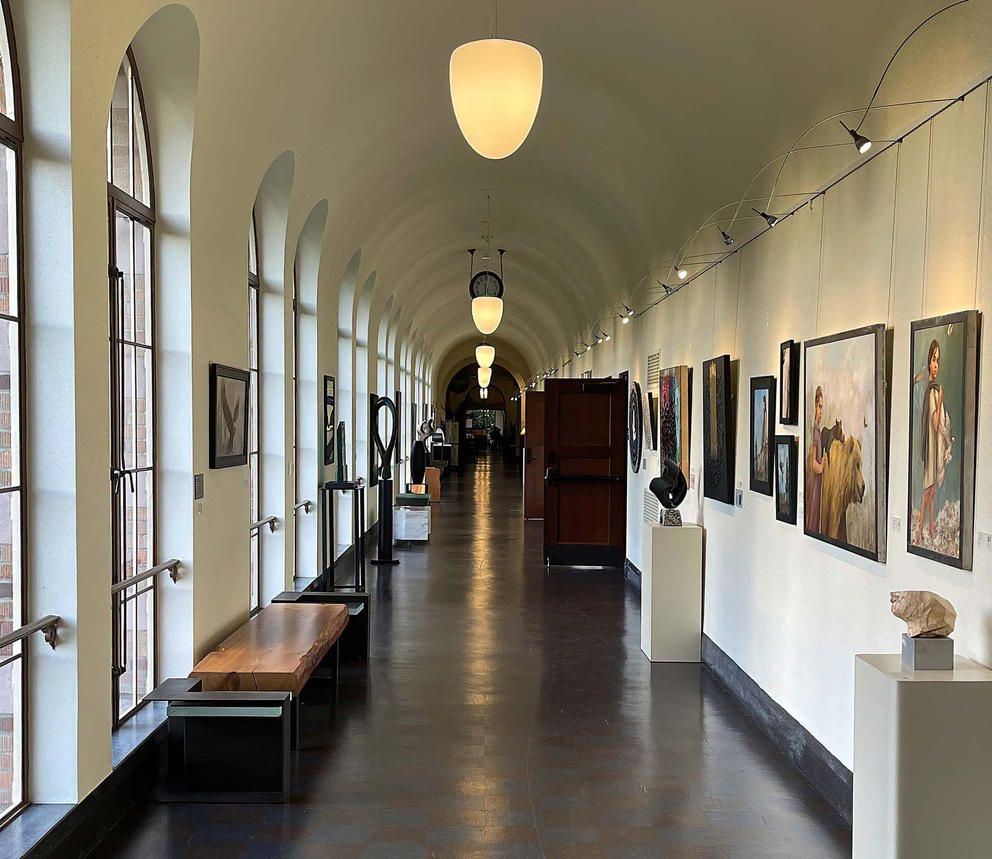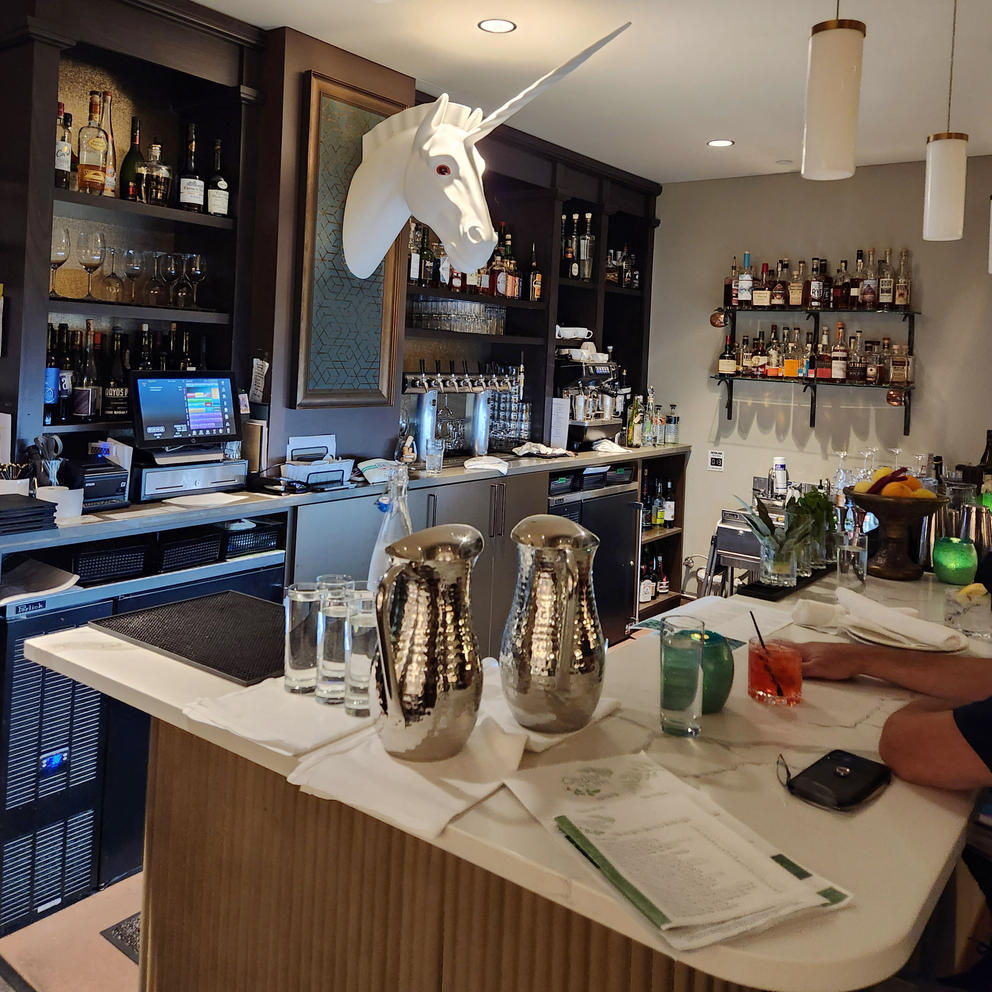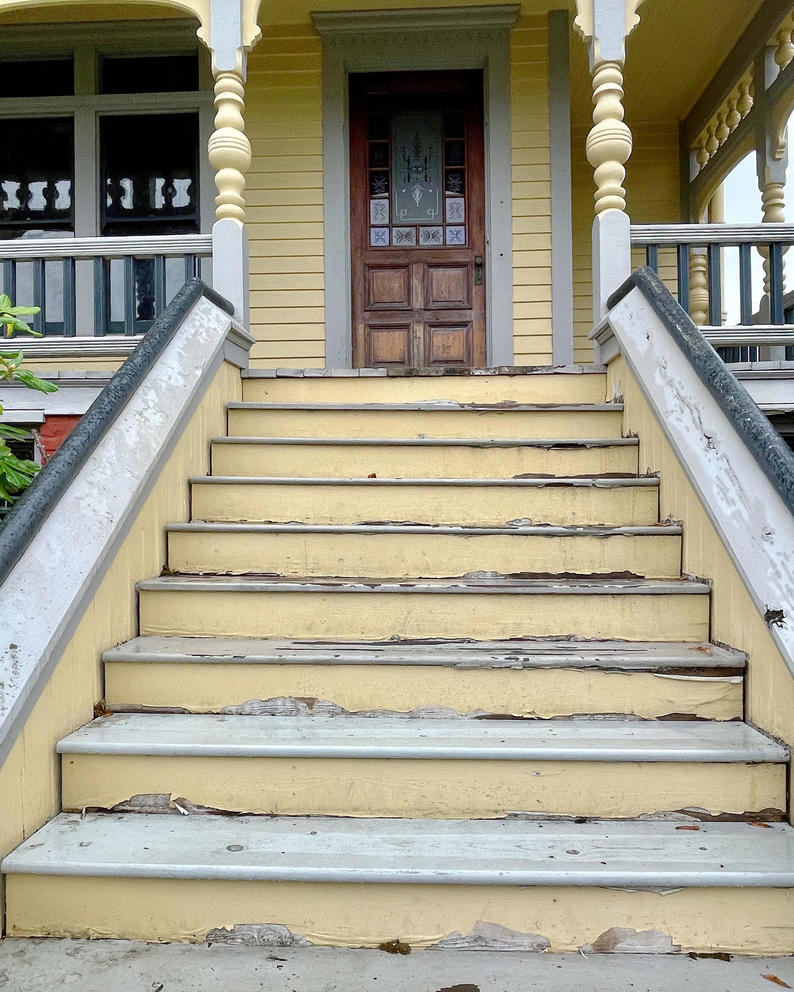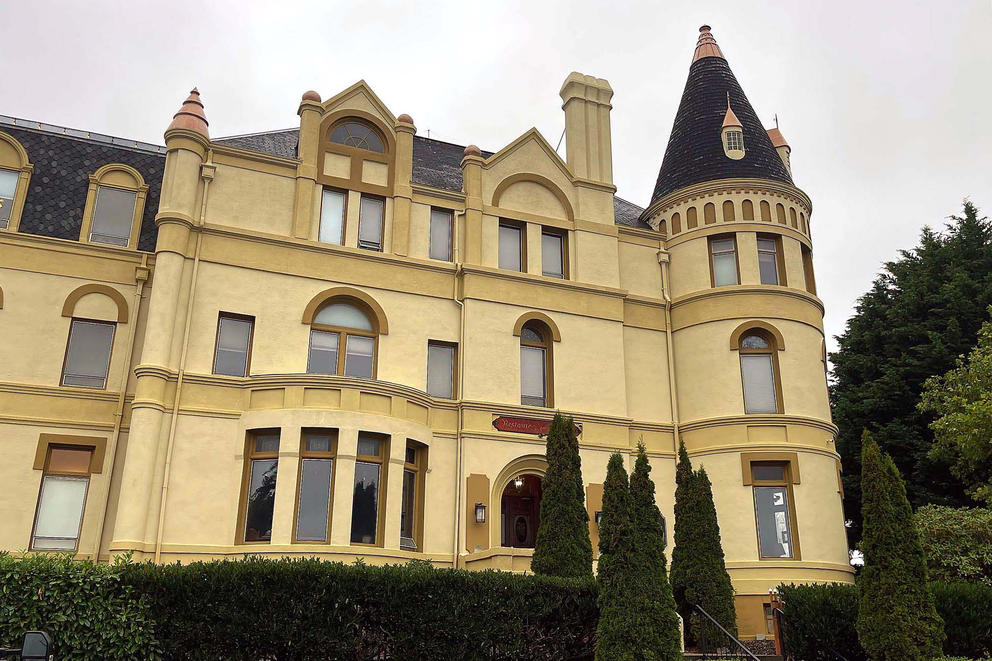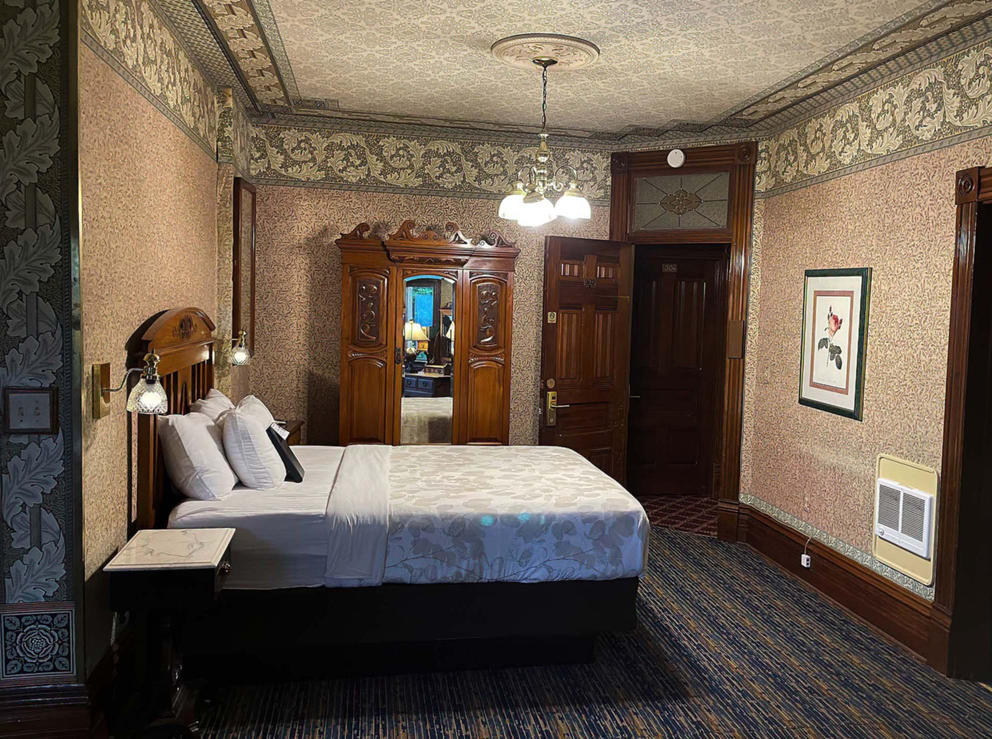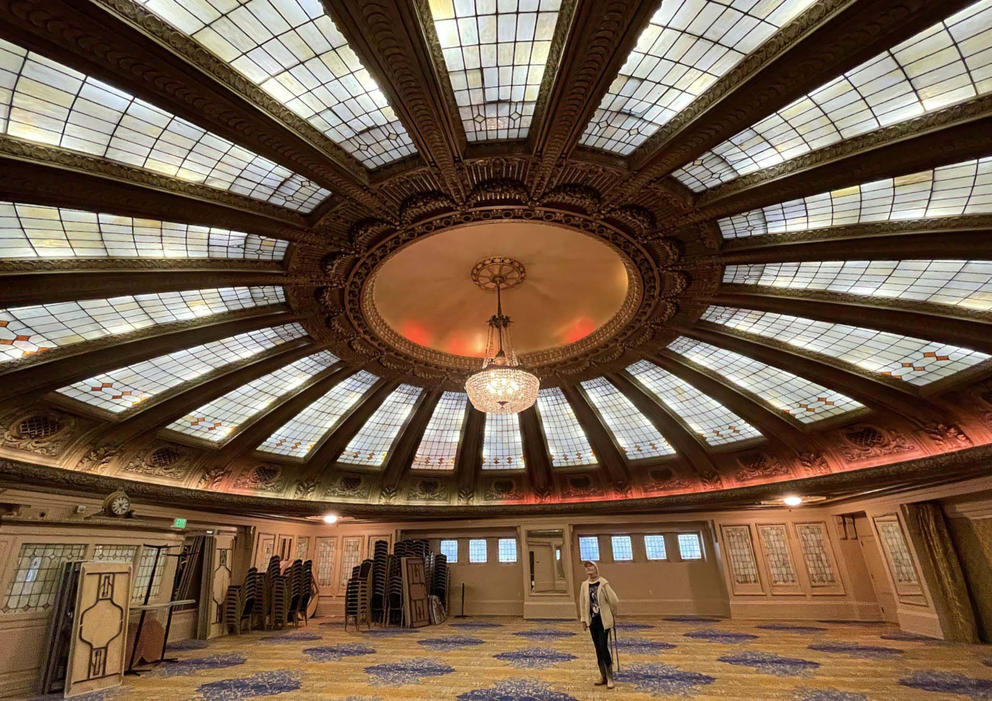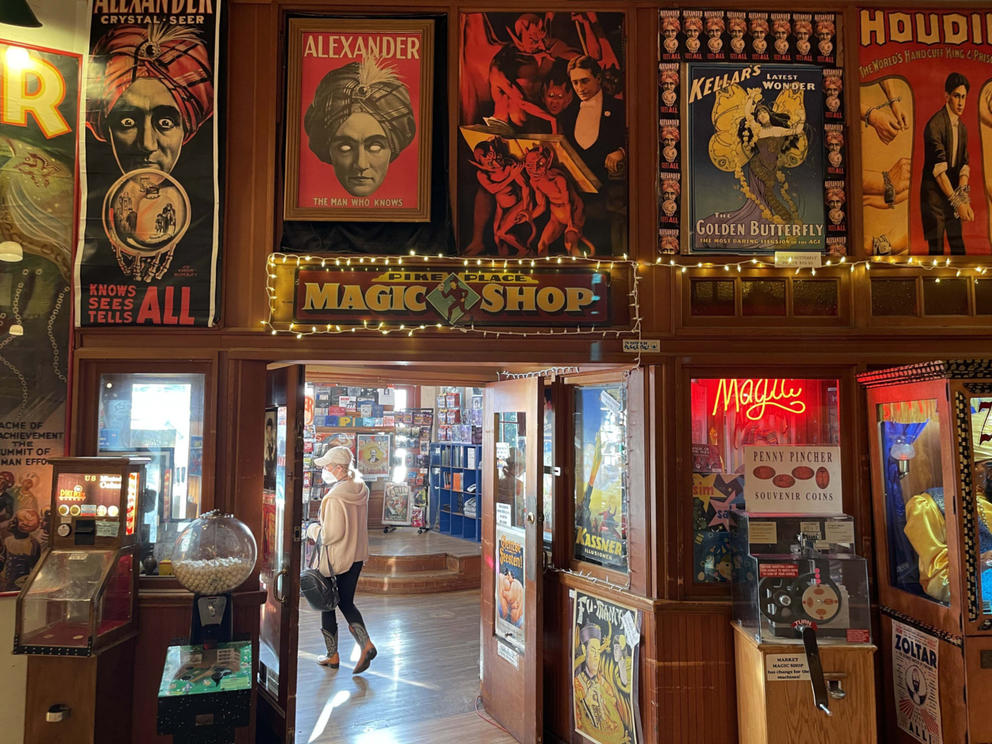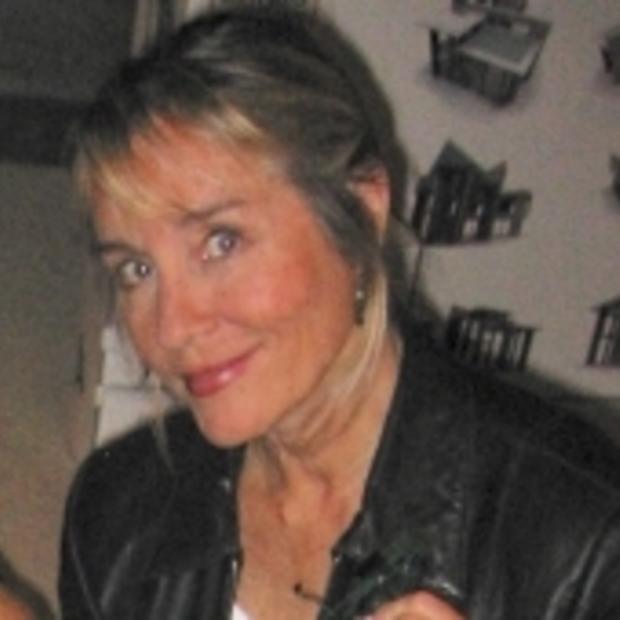What better way to get into the Halloween spirit than a witchy weekend road trip? So we conjured an itinerary of Pacific Northwest haunted locales to talk to those who’ve had encounters – or learn what ghosts they were chasing. We started at The Lodge at St. Edward Park in Kenmore on the northeastern shore of Lake Washington. Originally a Catholic seminary, it had been abandoned for 40 years, during which time it was tapped as a location for many horror films and thrillers. The bell tower’s dusty attic, its paint peeling, had been the setting of a Macklemore music video in tribute to a friend’s tragic death.
Now a sleek new luxury 84-room hotel, it was rumored to be haunted for years before it was renovated – stories that beckon the curious.
It was windy the night we approached the stone entrance. The Romanesque revival-style brick façade glowed behind the light of a dozen torch lanterns, flames flickering in the chill air. The massive 90,000-square-foot edifice is surrounded by a panoramic 326 acres of parkland, paths descending sharply through the deep, dark forest to the lake. Owls hooted in the distance.
Downstairs at the Lodge, Kathy Simonson was mixing cocktails at the Tonsorium Bar, once a barbershop for the young Saint Edward seminarians.
Under the watchful eye of a plaster-cast unicorn head hanging over the bar, she regaled me with tales of reported apparitions and supernatural happenings corroborated by five or six of her fellow staffers – unexplained footsteps, doors opening and closing, wine glasses flying off shelves, voices calling their names, orbs floating around a statue at the end of a hallway.
Simonson held me spellbound as she described her first-ever experience seeing ghosts. One night around 1:30 a.m. while closing the bar, she saw three solid figures moving along the edge of the valet pavilion. Behind them lay acres of grassy fields, inky black. But something was amiss.
“I saw three bodies, but only their upper halves. When I slowed down, they slowed down. And then they folded into one – and faded away.”
Months later, Simonson and a co-worker were preparing to leave when a wine goblet jumped off the shelf, hitting her in the calf. Astonished, she and the co-worker bolted for the door. “We’d been talking smack,” she said with a laugh. Maybe the ghosts of the young priests-in-training, turned pranksters, were scolding them for gossiping, she reasoned.
Then there was the forks Incident: A basket of forks had been left overnight in a banquet room once used as the seminary’s study hall. The next morning, when hotel sales staffers opened the room to show it to a prospective client, they found a dozen forks suspended, ominously stabbing the foam ceiling tiles.
“Those doors are always locked at night,” Simonson said. “So how did those forks end up there?”
The next morning we headed west. As the fog rolled in and the sky darkened, a ferry took us to the Olympic Peninsula and Port Gamble. A picturesque historic town built around a 19th-century sawmill, it too prides itself on its peculiar history of paranormal happenings, which have drawn hundreds of tourists over the years. Professional investigators (aka ghost hunters) routinely flock here, carrying flashlights, cameras and meters thought to suss out spectral presences.
Standing proudly over Gamble Bay is its most famously haunted residence, the Queen Anne-style 1888 Walker-Ames House. The grand four-story mansion, vacant since the mill closed in 1995, is the site of frequent ghost tours and hundreds of reports of apparitions, audible voices and shadowy figures. The apparitions are thought to be some of the town’s original inhabitants, including the daughter of the mill’s master mechanic, her husband, several children and a nanny. Port Gamble also hosts an annual Ghost Conference, this year on Nov. 10-12, organized by Pete Orbea, town manager, who leads the ghost tours by night.
Orbea recalled one close encounter with an apparition in the house, which he witnessed with a tour group: “A woman appeared behind me. I had my flashlight. She was standing there – and didn’t flinch when a flashlight beam hit her in the eyes. Ten people saw her. We gasped, and she vanished.”
Why does Port Gamble harbor such spirits? “People loved it here and don’t want to leave,” said Orbea. “It has such a calm feeling.”
Aha! Could this help explain the mystery of why Washington rates so high on spookiness scales? Ghostquest.net, which tracks “haunted locations, urban legends, and folklore tales,” has logged some 300 reports here. (Remember that our state also claims more Sasquatch sightings than any other – as well as the first sighting of a flying saucer, over Mount Rainier.)
Passing through dense forests, we headed north to the Manresa Castle Hotel.
Atop a hill above Port Townsend’s downtown overlooking Puget Sound and the Olympic Mountains, it looks every bit the chateau that an enterprising Prussian immigrant built in 1892 as a grand hotel fit for elite Victorian guests. When a railroad – and anticipated visitors – never came, it became a magnificent 30-room family home. In its time it’s also served as a retreat for nuns, a college for Jesuit priests, and finally a hotel.
Legends have swirled around the place for a century as its occupants have tried to explain paranormal experiences, front desk receptionist Amber Dawn Bolding said.
“One night I was here alone manning the phones. And it was the first time I was totally on my own here,” she said. She exited the back entrance, pitch-black dark, to find she was not alone.
“Suddenly I heard a female voice whispering ‘Hello.’”
Bolding didn’t stick around to find out who it was.
“When I say this girl could move,” Bolding said. “I thought they’d find me dead of a heart attack if I didn’t move as fast as I did.”
The adrenaline rush of such unexplained encounters has become a passion for Bolding, one shared by Manresa’s clientele. Bolding says guests are more likely to embrace the castle’s legends than flee for the exits.
One legend recalls a despondent Jesuit priest who hung himself in the tower. Another sad legend says that when a young woman, waiting for her seafaring husband to return, learned that he had perished, in despair she threw herself out a window. Some of these stories have been debunked as the mere fabrications of a former bartender trying to drum up hotel business. But like all intriguing ghost stories, they live on.
The last day of our excursion brought us to the Emerald City.
Our first stop was the Hotel Sorrento, the city’s oldest, which opened in 1909 and contains a century’s worth of secrets.
“There have been many souls coming in and out of here,” said Kieran Barber, who manages the front desk.
He often hears stories when people turn in their keys – a recent one being “seeing people in elegant turn-of-the-century garb, laughing at them.”
One of the Sorrento’s most famous ghosts is reportedly Alice B. Toklas, known for her autobiography containing a recipe for pot brownies. She and her longtime romantic partner, poet and novelist Gertrude Stein, were thought to have frequented the hotel, said Barber. Toklas grew up in her family home nearby.
Strains of piano music have been heard in the seventh-floor penthouse when no one was around. Was it Alice, who studied piano at the University of Washington? Or it could have been the recently deceased pianist Overton Berry, who often played for parties at the hotel, suggests Barber: “His music lives on forever.”
Another ghost believed to haunt the hotel is a bellboy who tried to rescue a little girl’s toy when it fell into the elevator shaft, but tragically died trying. That, say some employees, is why the elevator stops on the fourth floor as if guided by an invisible hand.
About half a mile away, near Pioneer Square, the Arctic Club Hotel, another historic icon, dates back to 1914. It was named for an exclusive men-only social club founded for businessmen and explorers by tycoons who’d made their fortunes in the Klondike Gold Rush. The hotel hosts a ghostly gallery of stories, including reports of poltergeists, disembodied footsteps, and “the smell of cigars” – even though smoking isn’t allowed on the premises, according to Ghost City Tours.
Here, too, Congressman Marion Zioncheck leapt to his death in 1936 from the fifth floor, landing on the pavement in front of a car occupied by his wife.
We asked bartender Mike Robertson what he knew about the Arctic Club Hotel’s ghosts. Robertson turned to his co-worker, an obviously 20-something Kairi Froehlich, and said, “Ask her. She’s been here since 1917!”
A short walk away, Pike Place Market hosts even more spirits. Kells Irish Restaurant and Pub, located in Post Alley, receives regular reports of strange encounters, “from ghostly voices yelling at the living … to shadows pacing back and forth along the back wall,” according to Ross Allison, author of Spooked in Seattle. Irish Central, based in Dublin, calls it possibly “the most haunted bar in America.”
The tavern is in the basement of what was originally a mortuary in the Butterworth Building, built when the city was flooded with corpses left from mining accidents, rampant diseases like cholera and tuberculosis, and the 1918 flu epidemic.
Here, mirrors have shattered, glasses have fallen without explanation, and people have reported seeing phantoms. One apparition, according to the website Ghostly Activities, “manifests in the Guinness mirror, then disappears, wearing a derby hat. This is a happy spirit soaking in the good vibes” of the lively bar.
Elsewhere in the Market, legend has it that a portly lady barber in the 1950s sang her clients to sleep, then picked their pockets. The sounds of her lullabies are said to still waft about the Market’s walkways at night.
Likewise, Kikisoblu, also known as Princess Angeline, eldest daughter of Chief Seattle, lived out her life in a small cabin on the water below what is now the Market, refusing to leave when the government forced Indigenous people off the land. She is still frequently seen at the Market, some say, though she died in 1896, a decade before it was built.
Neil McNeill, an independent paranormal researcher who investigated the Market, said that visitors and workers have described “a small Native American woman moving very slowly.”
“There have been so many reports of people ‘seeing’ her that there has to be something to it,” McNeill said.
For every believer, though, there’s a skeptic.
Back at the Lodge at St. Edward Park, food and beverage manager Kevin King says he can always find a practical explanation for the poltergeists and other supposedly supernatural stories he’s heard from his staff.
“The forks in the ceiling? I wouldn’t put it past some hoodlums to steal the key or somehow sneak in there,” he said. However, he doesn’t discourage the stories. “It’s fun – and our guests love it.”
Even if these folk tales – and personal accounts – of ghosts and spirits are hard, if not impossible, to prove, they are worth retelling. As Halloween, and darker days, lie ahead, they add fun and fascination for those willing to suspend disbelief – and can invite deeper understanding of the people and places that shape our local history.

